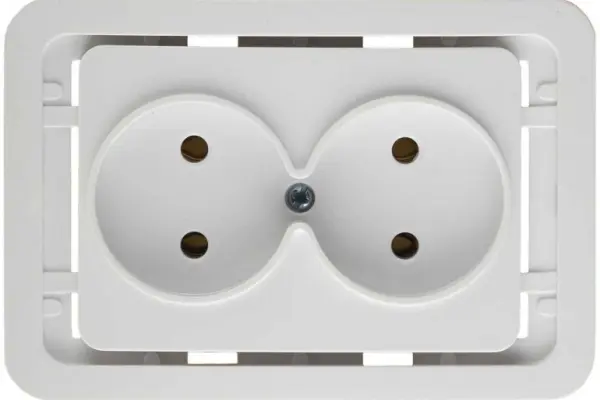Nowadays, acquiring a home involves significant expenses, including costs for renovation and building materials. Among the necessary components, special attention should be paid to the choice of outlets and switches. Stores offer a wide range of these products, which can be perplexing for an inexperienced buyer. However, making the right choice is not difficult if you consider technical specifications, safety aspects, and energy efficiency.
Technical Specifications
Initially, it is necessary to determine the required number of outlets and switches, based on the planned placement of electrical appliances in the room.
When choosing an outlet, it is important to consider the type of electrical wiring used: hidden or exposed. Depending on the option, a specific type of mounting mechanism will be required – recessed into the wall or external.
In modern homes, electrical wiring is equipped with a grounding circuit, so it is necessary to purchase euro outlets with an additional grounding contact.
Outlets should be rated for a nominal current of 10-16 A and a nominal voltage of 220-250 V to meet the needs of modern electrical appliances.
For bathrooms, outlets and switches with increased protection against moisture and dust are required. The level of protection is indicated by IP followed by two digits, for example, IP65 or higher.
Safety
Safety measures are critically important when installing and using outlets and switches. Improper handling can lead to electric shock or fire.
Electrical equipment should only be installed by qualified specialists, following all safety rules and manufacturer's instructions.
Do not overload outlets by connecting too many appliances. This can lead to overheating and combustion.
Regularly check outlets and switches for damage or signs of wear. Replace the item immediately if problems are detected.
Energy Efficiency and Ecology
When choosing outlets and switches, consider environmental and economic aspects. Prefer energy-efficient models that help reduce electricity consumption and carbon footprint.
Outlets with timers and motion sensors automatically turn off power when it is not needed, saving energy.
Dimmers allow adjusting the intensity of lighting, avoiding excessive electricity consumption.
Whenever possible, choose products made from recycled or environmentally friendly materials, produced by responsible brands.
Varieties of Outlets
Euro outlets. Characterized by the presence of an additional grounding contact.
Outlets with a cover. Designed for use in conditions of increased humidity and fog.
Outlets with protective shutters. Recommended for use in families with small children.
Outlets with a button. When pressed, they eject the connected plug.
Outlets with a timer. Allow setting automatic on and off.
Varieties of Switches
Push-button switches. Can be single-, double-, or triple-button.
Glowing switches. Help find the switch even in complete darkness.
Dimmers. Equipped with a regulator to adjust the intensity of lighting.
Passage switches. Installed at the beginning and end of a corridor – the light turns on when entering the corridor and turns off when leaving it.
The placement of outlets and switches should be thought out in advance, focusing on the planned placement of electrical appliances. Access to outlets should be as convenient as possible.
Nuances of Choice
When choosing outlets and switches, it is important to pay attention to several key aspects to ensure the quality and safety of the products:
-
Evaluating the material: Check the manufacturing material. Quality products are usually made from durable, high-temperature resistant, and non-flammable plastics. Avoid products with a sharp chemical smell, which can indicate the use of low-quality materials.
-
Strength and reliability: Ensure that the product is sturdy and does not deform under slight pressure. Quality outlets and switches should withstand normal daily use without visible signs of wear.
-
Ease of installation and disassembly: Choose products that are easy to install and disassemble. This will facilitate their installation and replacement when necessary.
-
Reliability of the grounding contact: Make sure that the grounding contact is strong and resilient. This is especially important for safety and preventing the risk of electric shock.
-
Completeness of the kit: Check that the outlet or switch comes with a full set of assembly and operating instructions. This will help to install and safely operate the product.
-
Brand choice: Prefer products from well-known and trusted brands. This guarantees quality, reliability, and compliance with safety standards.
-
Checking for protective shutters: For additional safety, especially in homes with small children, choose outlets with protective shutters that prevent foreign objects from entering.
-
Compatibility with electrical appliances: Ensure that the chosen outlets are suitable for all your electrical appliances, including in terms of voltage and current.
-
Consider design: Choose outlets and switches that harmonize with your home's interior. Many manufacturers offer a wide range of styles and colors.
-
Testing before buying: If possible, test the operation of the switches in the store to ensure their smooth and quiet functioning.
In concluding the list, remember that a careful approach to choosing outlets and switches not only enhances safety and comfort in your home but also contributes to long-term savings through the selection of quality and reliable products.
Comparing Brands and Models
Many brands of outlets and switches are available on the market, each with its advantages and disadvantages. The most popular and reliable brands include ABB, Legrand, Schneider Electric, Gira, and Jung.
Models vary in design, functionality, materials, and price range. It is critically important to compare characteristics and consumer reviews to find the optimal option that meets your needs and budget.
Installation and Maintenance
For safety and durability, the installation of outlets and switches must be performed by a qualified electrician in accordance with current standards and regulations.
Regularly inspect electrical equipment for damage or wear. Replace worn or faulty components as needed.
To replace an outlet or switch, first de-energize the circuit section, then remove the outdated device and install the new one following the manufacturer's instructions.
Frequently Asked Questions (FAQ)
Q: Can outlets be installed by oneself?
A: For safety, outlets and switches must be installed by a qualified electrician in accordance with rules and standards.
Q: What is the average cost of an outlet or switch?
A: Prices can vary from 1 to 5 dollars and higher, depending on the brand, functionality, and type of product.
Q: How often should outlets and switches be replaced?
A: If there are no visible damages, there is no need to regularly replace items. It is recommended to check them every few years and replace them when wear or malfunctions are detected.

